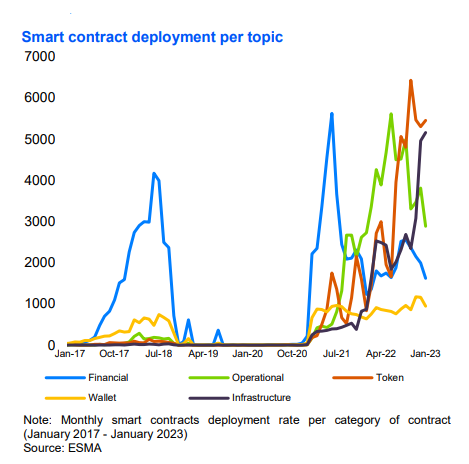First introduced on the Ethereum blockchain in 2015, smart contracts have become the backbone of Decentralized Finance (DeFi). Smart contracts are computer programs stored on the blockchain and run when predetermined conditions are met.
They are designed to facilitate financial transactions among blockchain users, without the need for trusted intermediaries that characterizes traditional finance. Owing to their open-source nature, smart contracts have been claimed to be a major source of financial innovation. Nonetheless, they bring enormous technological complexity.
Regulators and supervisors need to understand and monitor this complexity to systematically evaluate the risks to investors and financial stability stemming from DeFi. By discerning different categories of smart contracts, this article represents a first step in this direction. Researchers from the European Securities and Markets Authority (ESMA) implement a categorization of smart contracts on the Ethereum blockchain, define five major smart contract categories, and monitor their relative incidence over time.
They note a major difference in terms of smart contracts heterogeneity between the first and the second surge in smart contract deployment (occurring in 2017-2018 and in 2021-2023, respectively), reflecting the increased complexity of smart contracts and the adoption of more sophisticated protocols that came to characterize DeFi.


